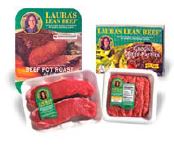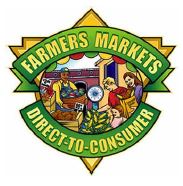Changing Consumer Preferences
In recent years, several trends have helped to shape current consumer preferences for food products. Two of these trends are food safety concerns and the increased separation between agricultural producers and finished product (food) consumers. Food safety concerns and the separation between producers and consumers are related, as the insecurity consumers feel regarding food safety stems from the numerous channels food products pass through before reaching the final consumer, especially in the case of imported products. This has been further compacted by the widespread outbreaks of Escherichia Coli (E-Coli 0:157) in the beef industry and salmonella contamination of various vegetables. In part, separation of producers and consumers and food safety concerns are responsible for the move on behalf of consumers and lawmakers to call for animal identification systems and additional product labeling.
In addition to these two trends, increased consumer awareness of food products has led to food moving beyond serving a basic necessity. Consumers desire food that is convenient, tasty and nutritious, and increasingly consumers want information about production methods. Consumers are becoming more concerned with the food production process (i.e. natural, organic, free-range, etc.) and how the production of their food has impacted others (i.e. fair trade, humane treatment of animals, etc.). Together, these trends have changed the market for food products and have led to the creation of an entire set of product attributes.
Traditionally, the attributes of food products were divided into two categories: appearance and experience attributes. Appearance attributes are those which a consumer can measure from simply observing the product, such as color, smell, size, etc. Experience attributes can be observed only through consumption of the product, such as taste and flavors. Recent consumer trends have given rise to a third set of product attributes: credence attributes. These are extrasensory attributes that cannot be determined through examination or consumption of the product. Instead, they are attributes that relate to the production and processing methods of the product. Because credence attributes can’t be observed, they must be communicated to consumers through the use of labels
Certification of products lends assurance to consumers that the products meet a certain set of standards. For credence attributes, certification proves to consumers that the attributes they cannot detect are present and contributing value to the product. Third-party certification comes from a certifying business or agency unassociated with the product they are certifying. Thirdparty certification not only lets consumers know the product has met a certain set of standards, it also assures consumers that the agency making the certification claim is not benefiting from those claims. For producers, certification allows them to enter a recognized market under an established umbrella program or label.
Branding is the use of a name, term, design, symbol or other distinguishing features to identify a product as distinct from other products (Giddens et al. 2002). One of the goals of developing a brand is to have consumers associate a product with that particular brand and view it as a sign of quality. A branding program is truly successful when consumers refer to a product by one brand name rather than the product name (i.e., referring to a copy machine as a Xerox machine or a cola as a Coke).
Premiums
In addition to desiring additional product information, many studies confirm that segments of consumers are willing to pay a premium for products containing process or origin certification labeling. A study by Grannis and Thilmany (2000) found that 38 percent of surveyed respondents were willing to pay a 10 percent premium for natural steaks, while 14 percent of respondents were willing to pay a 20 percent premium. Levi (1997) found that consumers spend, on average, an additional 48 percent per pound for the leanest varieties of ground beef, while McCluskey et al. (2005) found that their survey respondents were willing to pay $5.65 per pound more for low-fat, low-calorie beef over a standard product. As grass-fed beef is leaner than grain-fed beef, producing grass-fed beef might be a way to earn such a premium. A consumer study by Umberger et al. (2003) found that 23 percent of survey respondents were willing to pay a premium for grass-fed beef. Loureiro and Umberger (2003) found that consumers were willing to pay a 38 percent premium for certified U.S. steak and a 58 percent premium for certified U.S. hamburger. Loureiro and Umberger (2005) found consumers were willing to pay a premium of 2.9 percent for certified U.S. rib eye steak and a 2.5 percent premium for certified U.S. chicken breasts and pork chops.
A study of consumers in Nevada (Curtis et al., 2007) found that consumers were willing to pay a 42 percent premium for certified locally grown, grass-fed New York steak, 11.9 percent for locally grown grass-fed ground beef, 7.1 percent for locally grown grass-fed pork chops, and a 15 percent premium for locally grown grass-fed leg of lamb. A full description of this study can be found in the University Center for Economic Development publication UCED 2006/07-13, “Locally Produced Livestock Processing and Marketing Feasibility Assessment.”
Certification Options for Livestock Producers
Following specific production and certification programs may allow livestock producers to garner new customers, add-value to their products and increase their market share. The United States Department of Agriculture (USDA) has developed a set of standards for several types of meat production processes, including natural, organic and grass-fed. These programs are described below along with a description of the conventional meat production process. Additionally, local certification and branding programs are discussed.
Conventional Meat
Conventional livestock production methods typically involve a period of pasture feeding (12 to18 months for cattle) followed by grain finishing for the final several months (120 to 200 days for cattle) of the animal’s life prior to slaughter. Livestock raised conventionally is allowed to receive antibiotics and growth hormones, and may be exposed to chemicals in the form of herbicides and parasite control methods. The major benefit of conventional production is the size livestock is able to achieve through the use of hormones and grain finishing, which is larger than livestock can typically obtain through a grass-fed diet and could translate into higher selling prices for producers. Other benefits are increased marbling of meat, which is an attractive attribute to many meat consumers, and consumer preference, as many consumers like the taste of grain finished meat and are familiar with it.
Natural Meat
Although natural meat products are prevalent in grocery store coolers, a little-known fact among consumers is that the USDA does not have a set of guidelines for the actual production of natural meat products. This label merely indicates that the product in question has been subject to minimal processing and contains no additives, artificial flavors, colors or preservatives. Although USDA requires that producers qualify the natural label with a statement such as “no artificial ingredients” or “minimally processed,” currently there is no actual third-party certification for natural products. This means anyone can say their product is natural without having to provide evidence to back up the claim. Because of this, a growing movement exists between both consumers and producers for stricter requirements for the use of the natural label. Unofficially, many producers who consider their meat products to be natural, raise their livestock without the use of antibiotics, growth hormones or implants. USDA’s Food Safety and Inspection Service (FSIS) division regulates the use of the term “natural” as applied to agricultural products. On November 28, 2007, USDA’s Agricultural Marketing Service (AMS) issued a call for comments on a proposal to raise the standard of the natural marketing claim to require certification of product labels by USDA’s FSIS Labeling Program and Delivery Division (LPDD).

Organic Meat
For food products to be certified organic they are subject to the USDA’s strictest certification standards, starting at the time of the third period of gestation for livestock and the second day of life for poultry. Livestock that is certified organic must not be given growth hormones or antibiotics, although routine vaccinations and vitamin and mineral supplements are permitted, and if an animal falls ill, it cannot be denied antibiotic treatment for its health (instead, it must be treated and removed from the organic program). Livestock must not be exposed to most chemical pesticides, synthetic fertilizers, or sewage sludge and must be produced without the use of bioengineering or ionizing radiation. Additionally, organic livestock must be given feed that is certified 100 percent organic and ruminants must have access to pasture, although grain finishing is allowed as long as the grain is certified organic. All livestock must have outdoor access to be considered for organic certification and may only be temporarily confined indoors for reasons of protecting the animal’s health or safety or to protect surrounding soil or water quality. A list of items prohibited from use in organic livestock production can be found at the National Organic Program’s website (see More Information on page 8).
In addition to adhering to USDA’s strict production standards, a government-approved organic certifier must inspect the operation to ensure the guidelines are being followed. In 2007, the maximum fine for making false organic certification claims was $11,000. Producers and processors with less than $5,000 in annual agricultural receipts are exempt from organic certifications and may use the organic label. However, these operations are still subject to the National Organic Program (NOP) audit.
Obtaining organic certification also requires standards of the farm and operators. For example, wood used to build farrows may not be treated with arsenates. Further, NOP encourages producers to follow best management practices whenever possible, although many organic producers take it upon themselves to use renewable resources and sustainable practices. Once an operation has received its organic certification, it remains certified until either the operation surrenders its certification or is found to be in noncompliance by a certifying agent.
Currently, none of the organic certifiers in Nevada are sanctioned to certify livestock operations. However, any USDA-approved certified agency can perform certification for producers in the state. A full listing of USDA-approved organic certification agencies can be found on the NOP website.
Grass-Fed Meat
Until October 2007, for livestock to be certified as grass, pasture or forage-fed, it needed to have a diet that was 80 percent composed of grasses (annual and perennial), forbs (legumes, brassicas), browse, forage, vegetative (pre-grain) cereal grains, stockpiled forages and postharvest crop residue without separated grain. Effective November 15, 2007, AMS raised this standard to a “maximized” grass- (forage-) based diet, meaning livestock’s diet over the course of its entire life must consist of the above-mentioned grasses and forages with the exception of milk consumed prior to weaning. There was some protest to this standard as many regions of the United States experience periods of zero plant growth. AMS has allowed for provisions of supplemental consumption non-pasture feed (i.e. harvested or stockpiled forages) to ensure the health of the animal in times of adverse environmental conditions and inadvertent exposure to non-grass feedstuffs. However, AMS requires that producers keep this supplementation fully documented and must also maintain documentation of each animal’s diet over the course of its life to ensure the maximum standard (grass/forage diet over the entire course of the ruminant’s life) is being met as well as possible.
Feed that is not permissible includes cereal grains, grain byproducts (starch and protein sources), cottonseed and cottonseed meal, soybean and soybean meal, non-protein nitrogen sources such as urea, and animal byproducts. In addition to the previously mentioned items, permissible feed also includes roughage defined as feed high in crude fiber and low in total digestible nutrients (found acceptable by AMS due to the low nutrient content and high bulk) and mineral and vitamin supplements to ensure the nutritional needs of the animal are being met.
Although AMS recognizes that a grass-fed diet is complementary to non-confinement, there are no restrictions on the amount of time livestock must be unconfined as long as the animals are allowed to graze live pasture during the growing season. There are also no restrictions on the use of antibiotics and hormones. However, producers who meet free-range and antibiotic- or hormone-free certification standards are welcomed to include these aspects in their labeling. Grass-fed certification is obtained through FSIS. Although there are many nutritional claims associated with grass-fed beef (i.e., it is leaner than conventional beef, has higher levels of Omega-3 fatty acids and CLA, etc.), AMS has not authorized these claims with the grass-fed label.
Figure 1: Labeling Examples
Source: CSU, Chico Grass-Fed Information Web Site

Certified Local
Communicating to consumers that a product has been produced locally (state, regional, etc.) is a way of adding value to a product without having to change production methods. The previously mentioned widening separation between producers and consumers generates concern among consumers who are interested in supporting their local economy by purchasing local products in addition to consumers who are worried about the lack of traceability. Labeling a product as locally produced is best done through the use of a third party.
Currently there are two third-party certification programs in Nevada for local products. One is NevadaGrown, a collaborative effort between the Nevada Certified Farmers’ Market Association and the Nevada Certified Organic Program to promote the growth and use of Nevada agricultural products. In addition to providing assistance with marketing and promotion, NevadaGrown provides its members in good standing with the use of the official logo, certifying that the product is local. To become a member of NevadaGrown a producer must reside or own property in Nevada, and his or her raw agricultural products must be grown/produced in the state while processed agricultural products must contain no less than sixty percent Nevada grown products/ingredients.
The second third-party certifier of local production is Made in Nevada, a program run by the Nevada Commission on Economic Development, the Nevada Small Business Development Center and the Management Assistance Program. The goals of the program are to promote local business and educate Nevadans about local products. Additionally, the program provides its members with technical business assistance. Member benefits include being listed on and hotlinked to the program’s website, use of the logo and promotional and distributional assistance. To qualify for membership in Made in Nevada, agricultural producers must produce or process their products in the state. Members must pay an annual $50 fee to maintain their standing.


Branding
Research shows that consumers who associate a brand name with a positive experience are willing to pay more for the branded product than for the same product marketed under a different name. One study found that, on average, the top brand in a specific market can earn a 10 percent price premium over the next preferred brand and as much as a 40 percent price premium over a generic store brand (Giddens et al., 2002). This same study found that consumers who repeatedly purchase a certain brand spend, on average, three to four times as much on food products as do consumers who purchase food products based on lowest price rather than brand. Repeat purchases from loyal customers are important not only because they lend support to the products consumer base, but because it is much more costly to obtain new customers than it is to retain current customers (Giddens et al., 2002).
There are many meat-producing companies who have found success marketing branded meat. Perhaps one of the most widely-recognized is Laura’s Lean Beef, a family-owned company started in 1985 in response to the meat industry trend toward consolidated farms, mass production and the use of hormones and antibiotics. The company produces natural, grass-fed meats and strives to follow sustainable agricultural practices while treating livestock in a humane manner. Currently, Laura’s Lean Beef is supplied by a national alliance of family farms and the company’s products are sold in more than 6,500 stores in 47 states.

Another example of branding success is Maverick Ranch Natural Meats, another family-owned natural meat-producing company that has found success marketing their meats as lean and heart-friendly (Maverick Ranch is endorsed by the American Heart Association) as well as safe (due to rigorous testing for antibiotics, pesticides, hormones and steroids). Maverick Ranch products are available in 2,000 retail stores nationwide. The next step for Maverick Ranch is to produce organic meats within the next five years.
Coleman Natural Meats, established in 1979, was an industry leader in the market for natural meats. The company has built success by following a guideline of antibiotic-, hormone- and preservative-free meats that come from livestock that has only been fed a vegetarian diet and lived a free-range life. Coleman Natural Meats are available across the country.
Distribution & Promotion Strategies
Once a producer has made the decision to differentiate his or her product, two new issues arise: how and where to sell the products and how and where to find customers. These are issues that can be addressed through distribution and promotion strategies.
Distribution
Specialty Stores
One outlet for meat producers to consider is specialty stores, which are retail outlets that aim to serve a niche market of customers who prefer products with credence attributes such as organic, natural and locally-produced. Specialty stores serve a market that is currently expanding and could provide opportunities for Nevada’s livestock producers. Specialty stores in Nevada include Whole Foods Whole Foods and Wild Oats, Trader Joe’s and Costco Warehouses. Although Costco serves more than just this niche market, the company does make a practice of offering natural and organic products to its customers and the Reno store features a monthly information session on beef with members of the Nevada Cattlewoman’s Association. This relationship could be enhanced to allow Nevada’s livestock producers a chance to enter the market and educate consumers about locally produced branded meat products.
Restaurants
A 2006 survey of executive chefs of gourmet and high-end restaurants in Nevada found that although nearly two-thirds of the surveyed chefs had never purchased local foods, nearly all of them were willing to begin making local purchases or increase their current local purchases if producers were able to meet certain requirements (Curtis et al., 2006). Although restaurants are unlikely to serve as a single solution for the issue of where Nevada’s livestock producers can market differentiated meat products, marketing these products to chefs and restaurants could help producers to increase and/or expand sales.
The surveyed chefs indicated they had needs for all types of beef, lamb and pork products with an emphasis on natural and organic products. Specific cuts that were mentioned included leg of lamb, tenderloin, pork roasts, pork bacon, veal loin, rib eye, beef tenders and N.Y. strip steaks. Chefs also mentioned an interest in Kobe beef, veal and buffalo. The full results of this study (Nevada Supporting Nevada Market Initiative) can be found online at Nevada Supporting Nevada Market Initiative.
Farmers’ Markets
Farmers’ markets are an excellent way for producers to introduce their products and themselves to local customers. In an era of food safety concerns and increased separation between producers and consumers, many consumers are willing to pay more for products that come from a familiar source. The public's growing concern with healthy eating and knowing where and how food is produced has fueled the growth of farmers’ markets across the country. The Nevada Certified Farmers’ Market Association has an open membership policy and maintains a list of and contact information for Nevada’s farmers’ markets on the NevadaGrown website at Nevada Grown.

Promotion
Having a reliable distribution method is an important step in obtaining a market for differentiated meat products, but an effective promotional strategy is key in maintaining a foothold in a market. An effective promotional strategy might include targeting several types of customers through various media outlets, including print media (residential mailers, brochures, newspapers, magazines, phone books), electronic media (websites, Internet advertising) and broadcast media (TV, radio).
Although all media avenues can play a role in a successful promotional strategy, it is imperative that the media chosen are appropriate for the target market. For example, if the target market is working women ages 25 to 35, it would be best to conduct radio advertising during commute times, or use newspaper advertising on the weekends, as this market is likely to read the newspaper only on Sunday. The section of the newspaper the advertising falls under is also important. For example, the demographic that reads advertisements in the sports section may not be the same demographic that reads advertisements in the entertainment section. As more and more consumers have computer and Internet access, electronic media have become an increasingly important promotional tool for producers. Websites can be a powerful marketing tool and are recommended for a promotion plan as well as for building brand awareness and connecting products to consumers. Producers who are not Internet savvy can hire an outside company to build, host, maintain and provide support services for their website. Web design companies that feature agriculture-specific design options include (We Build Pages, 1-518-270-0854), (Country Lovin, 1-419-427- 8608) and (Dayana Host, 1-604-939-3453).
Direct marketing offers producers an opportunity for product promotion as well. Product samples, especially samples of fresh food products, are an excellent way to give potential customers an idea of both product availability and product quality. Farmers’ markets are especially conducive to this sort of promotion.
Conclusions
Consumers in the United States are becoming increasingly concerned with obtaining information about the food products they purchase and consume. This includes information relating to production methods (organic, natural, etc.) and location of production. Studies have found that some consumers are willing to pay a premium for products bearing labels that communicate such information, particularly when the information is certified by a third-party, such as USDA.
Entering the market for such differentiated meats is one way for Nevada’s livestock producers to add value to their products. Differentiation options include organic, natural and grass-fed production. In addition to producing differentiated products, producers need to develop and employ an effective distribution and promotion strategy.
More Information
All USDA programs have comprehensive websites designed to provide professionals in the agriculture industry with information pertinent to their business. See the National Organic Program website for more information regarding organic standards and certification requirements: National Organic Program; the Food Safety and Inspection Service site for information about natural production and labeling terms: Food Safety and Inspection and the Agricultural Marketing Service website for more information regarding grass fed meat standards and certification information: Agricultural Marketing Service.
Further information about the NevadaGrown marketing program can be found online at NevadaGrown or by contacting Rick Lattin at (775) 423-8587. Information about the Made in Nevada program can be found at the program’s website, Made in Nevada or by telephone at (775) 687-4325. For more information about the Nevada Certified Farmers’ Market Association, contact Ann Louhela at (775) 351-2551 or at Nevada Certified Farmers’ Market Association.
Additional information on niche marketing and the benefits of branding and certification agricultural products can be found in the UNCE fact sheets “Niche Marketing Opportunities for Nevada Agriculture” (FS-05-32) and “Adding Value to Agriculture: Branding and Certification” (FS-05-30). For more information on working with chefs and restaurants, see the UNCE fact sheet “Working With Gourmet Chefs: Strategies for Small Agricultural Producers” (FS-06-12). These and other UNCE fact sheets can be found online at Working With Gourmet Chefs.
Information on marketing natural and grass-fed meats can be found on the California State University, Chico grass fed beef website at California State University. Resources for marketing all types of agricultural products are available from the Agricultural Marketing Resource Center.
References
Acevedo, N., J.D. Lawrence, and M. Smith (2006). “Organic, Natural and Grass-Fed Beef: Profitability and Constraints to Production in the Midwestern U.S.” Publication of Iowa State Value-Added Agriculture Extension.
Curtis, K., M. Cowee, A. Acosta, W. Hu, S. Lewis, and T. Harris (2007). “Locally Produced Livestock Processing and Marketing Feasibility Assessment.” University Center for Economic Development Publication 2006/07-13.
Curtis, K., M. Cowee, M. Havercamp, and R. Morris (2006). “Nevada Supporting Nevada Market Initiative.” University Center for Economic Development (UCED) Publication 2005/06-24.
Giddens, Nancy, Melvin Brees, and Joe Parcell (2002). “Building Your Brand.” University of Missouri – Columbia Value Added Development Center Publication G 650, September 2002.
Giddens, N., and A. Hofmann (2001). “Building Your Brand.” University of Missouri – Columbia Value Added Center 2, November 2001.
Grannis, J. and D. Thilmany (2000). “Marketing Opportunities for Natural Beef Products in the Intermountain West.” Colorado State University Cooperative Extension Agricultural Market Report 00-02, June 2000.
Levi, Annette E. “Consumer Acceptability of Natural Beef.” Online. Available at Consumer Acceptability of Natural Beef. Retrieved January 2007.
Loureiro, M. and W.J. Umberger (2005). “Assessing Consumer Preferences for Country-of- Origin Labeling.” Journal of Agricultural and Applied Economics 37, 1:49-63.
Loureiro, M.L. and W.J. Umberger (2003). “Estimating Consumer Willingness to Pay for Country-of-Origin Labeling.” Journal of Agricultural and Resource Economics 28, 2:287- 301.
McCluskey, J.J., Wahl, T.I., Li, Q. and Wandschneider, P.R. (2005). “U.S. Grass-Fed Beef: Marketing Health Benefits.” Journal of Food Distribution Research 36, 3:1-8.
Umberger, W.J., D.M. Feuz, C.R. Calkins, and B.M. Sitz (2003). “Country-of-Origin Labeling of Beef Products: U.S. Consumers’ Perceptions.” Journal of Food Distribution Research 34, 3:103-116.
Western Extension Marketing Committee (2005). “Certification and Labeling Considerations for Agricultural Producers.” Online. Available at Certification and Labeling Considerations for Agricultural Producers.
Cowee, M. and Curtis, K.
2008,
Alternative Marketing Options for Nevada’s Livestock Producers,
University of Nevada Cooperative Extension


